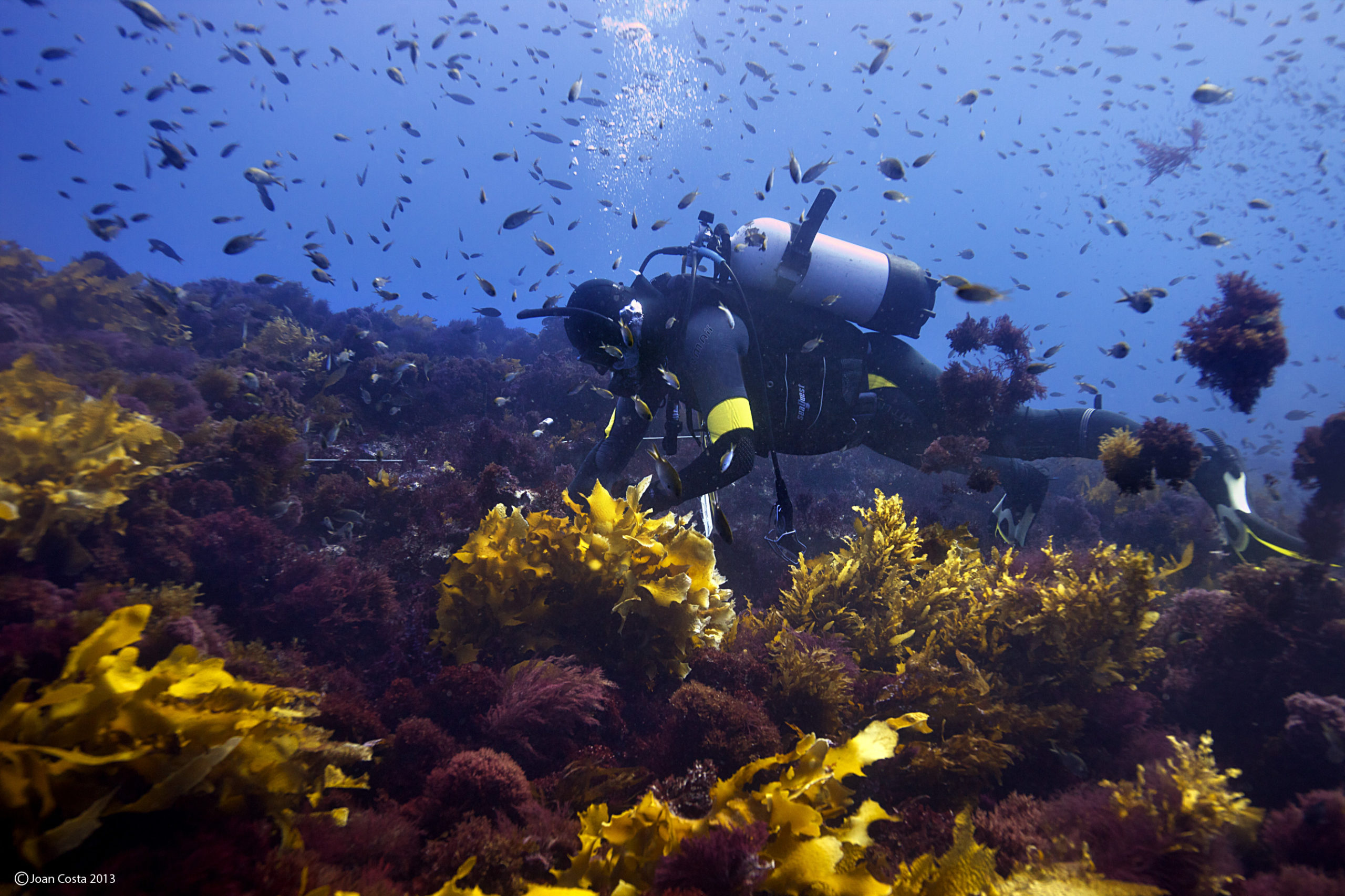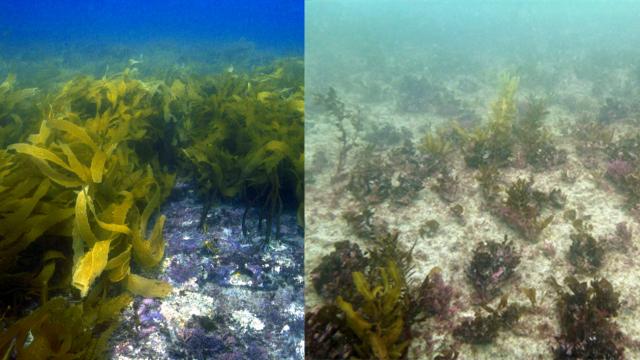One of the largest kelp forests on Earth is dying because of climate change. Australia’s Great Southern Reef has lost 100km of coastline to a series of extreme heatwaves from 2011 to 2013, according to research published this week in Science — and the problem is getting worse.
Rocky reefs off Australia’s western coast before (left) and after (right) a 2011 marine heatwave. Image: T. Wernberg
You probably haven’t heard of the Great Southern Reef, which receives far less media attention than its ill-fated neighbour to the north, the Great Barrier Reef. But the Great Southern Reef is an equally important ecosystem for humans and marine life alike. Fringing some 71,000 square kilometres of Australia’s rocky southern coastline, this “biological powerhouse” harbours thousands of species of fish, crustaceans, mollusks and other marine invertebrates found nowhere else on Earth. It also contributes $10 billion to Australia’s annual economy through fishing and tourism.

A healthy Australian kelp forest. Image: Joan Costa
Thomas Wernberg, a marine ecologist at the University of Western Australia, first noticed signs of stress in the Great Southern Reef after an unprecedented 2011 heatwave, which saw sea surface temperatures off Australia’s western coast soar up to 6C above average thanks to a combination of global warming and the La Niña climate pattern. (While El Niño is more often associated with extreme ocean heat, western Australia receives additional heat during La Niña due to a strengthening of tropical ocean currents.)
“We then started a broader investigation of impacts across the coast,” Wernberg told Gizmodo in an email.
Over the next few years, La Niña kept temperatures high as Wernberg and his colleagues conducted a detailed ecological survey of the Great Southern Reef. Overall, the two year heat wave triggered kelp forest die-backs across 2300 square kilometers of reef and “functional extinction” along the northernmost 100km. Rather than recovering after the ocean cooled off, this dead kelp forest was replaced with seaweed mats and an odd assortment of invasive subtropical species.
It’s the most rapid and catastrophic kelp forest die-off ever seen anywhere on Earth.
Kelp forests are a bastion of marine biodiversity, blanketing roughly a quarter of our planet’s coastlines at temperate and polar latitudes. While poorly-studied compared with coral reefs, what scientists do know suggests these ecosystems are highly temperature sensitive, meaning they’re likely to suffer more die-backs as the oceans continue absorbing heat from our carbon-loaded atmosphere.
According to Wernberg, marine biologists are now witnessing similar signs of heat stress off the coast of Japan, and possibly Tasmania. “But more broadly, there are many signs that similar effects will manifest in many places in the near future,” he said.
As for the Great Southern Reef, ecologists are going to be watching it closely in the months ahead, particularly if La Niña returns as predicted.
“It takes several conditions to align for temperatures to become extreme,” Wernberg said when asked about this year’s risk. “In addition to the La Niña, we also need calm winds and lots of atmospheric heat for an extended period. So it is too soon to say for sure but there is definitely a risk.”
[Science]
